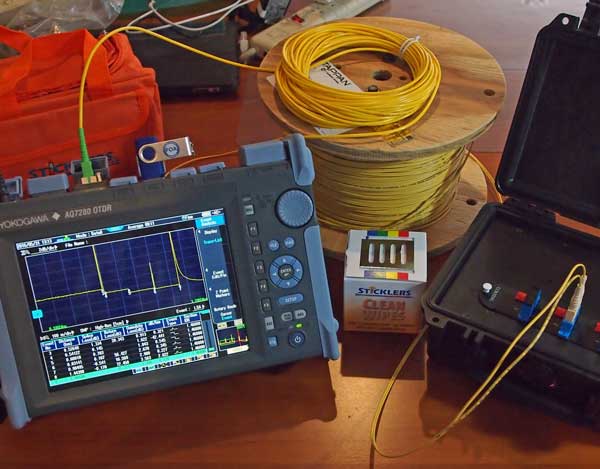Essential challenges optical measurement system can solve in manufacturing
All You Required to Learn About Robotic Vision and Its Applications in Advanced Optical Dimension Systems
Robotic vision represents a considerable improvement in the junction of computer vision, man-made knowledge, and equipment understanding. This innovation boosts the precision of optical dimension systems, allowing real-time information analysis and enhanced quality assurance. Its impact spans several fields, from producing to medical care. The evolving landscape of robotic vision elevates inquiries about future capabilities and applications. What developments lie in advance in this transformative field?
Comprehending Robotic Vision: Trick Concepts and Technologies
Robotic vision encompasses the technologies and methodologies that enable machines to translate and recognize aesthetic details from their setting. This field incorporates aspects of computer vision, expert system, and device learning to promote automatic decision-making based on aesthetic data. Secret concepts consist of picture handling, which entails the improvement and analysis of photos to remove purposeful attributes, and item acknowledgment, which permits equipments to recognize and identify things within a scene.

The Assimilation of Robotic Vision With Optical Measurement Equipments
As sectors increasingly demand precision and effectiveness, the integration of robot vision with optical measurement systems has emerged as a transformative technique. This synergy permits robots to perceive and interpret their environments, improving the ability of optical measurement systems to examine and examine objects with unmatched precision. By equipping optical sensing units with sophisticated imaging innovations, robotic vision enables real-time data collection and handling, facilitating prompt modifications to measurement criteria.
Additionally, the combination empowers automated systems to detect variants in measurements, surface high quality, and positioning, which are vital in high quality control procedures. Improved formulas, such as artificial intelligence, additional boost this integration by enhancing the systems' capability to adjust to different environments and circumstances. The combination not only enhances dimension processes but likewise decreases mistakes, ensuring that items meet stringent industry standards, thereby strengthening the duty of robot vision in the future of optical measurement systems.
Applications of Robotic Vision in Production
In contemporary manufacturing settings, making use of vision systems has revolutionized production processes by making it possible for equipments to perform tasks with amazing accuracy and rate. Robotic vision systems are increasingly employed for quality control, where they evaluate items for issues and warranty adherence to requirements. These systems make use of electronic cameras and advanced algorithms to analyze items in real-time, substantially lowering the threat of human error.
Furthermore, robot vision helps with automation in production line, allowing robots to properly recognize components and construct them with marginal downtime. This innovation additionally enhances supply management, as vision systems can keep an eye on stock levels and identify discrepancies, ensuring a smooth supply chain.
In addition, robotic vision aids in the implementation of smart factories, where information from vision systems can be integrated with other technologies to maximize process. In general, the applications of robot vision in producing show its critical duty in enhancing performance, high quality, and productivity throughout different industries
Robotic Vision in Medical Care: Reinventing Patient Treatment

In rehab, robotic vision help in monitoring patient progression and customizing treatment sessions to specific requirements. It supports medical professionals by automating jobs such as information collection and individual monitoring, enabling even more time to concentrate on direct person communication. Furthermore, robotic vision boosts telemedicine by enabling remote diagnosis and online assessments, connecting the space in between clients and doctor. In general, the application of robotic vision in healthcare is reinventing individual care, resulting in improved outcomes, performance, and individual complete satisfaction.
Future Fads and Developments in Robotic Vision Modern Technology
The quick development of robotic vision modern technology promises to better enhance its applications throughout various markets, consisting of health care. Future trends suggest a considerable change in the direction of including expert system and device understanding, allowing systems to find out from vast datasets and enhance precision over time. Improved sensing unit technologies and deep discovering formulas are expected to improve things acknowledgment capacities, permitting robotics to translate complicated settings better.

The assimilation of increased fact (AR) with robotic vision will likely transform just how robots assist in medical treatments and diagnostics. This harmony will help with real-time information visualization, improving decision-making processes. In addition, miniaturization of parts will lead to more small and functional robotic vision systems suitable for a range of jobs. As these innovations unfold, industries will certainly witness enhanced automation and performance, strengthening robot vision as a cornerstone of best site ingenious technological remedies.
Regularly Asked Concerns
What Are the Key Components of a Robot Vision System?
The main parts of a robot vision system consist of cams for image capture, processors for information evaluation, formulas for analysis, and actuators for motion. Together, these elements enable robotics to perceive and interact with their setting properly.
Just How Does Robotic Vision Improve Accuracy in Measurements?
Robotic vision improves dimension accuracy by making use of sophisticated imaging innovations, allowing precise things detection and spatial analysis. This capability lowers human mistake, enhances repeatability, and permits for real-time adjustments, eventually boosting total measurement dependability and efficiency.
What Industries Benefit Many From Robotic Vision Modern Technology?
Various markets benefit considerably from robot vision modern technology, including manufacturing, health care, agriculture, and logistics. These markets use improved precision, effectiveness, and automation, leading to improved efficiency and lowered operational costs in their particular procedures.
Can Robotic Vision Equipments Operate In Low-Light Conditions?
Robotic vision systems can undoubtedly operate in low-light problems, utilizing advanced sensors and formulas to boost photo clearness. This capability allows them to execute effectively in various atmospheres, including commercial and surveillance applications, despite very little lighting.
What Are the Costs Related To Applying Robotic Vision?
The prices connected with applying robotic vision vary significantly, affected by elements such as cams, software program, and integration. Added costs consist of maintenance, training workers, and possible upgrades to existing systems, which can collect gradually.